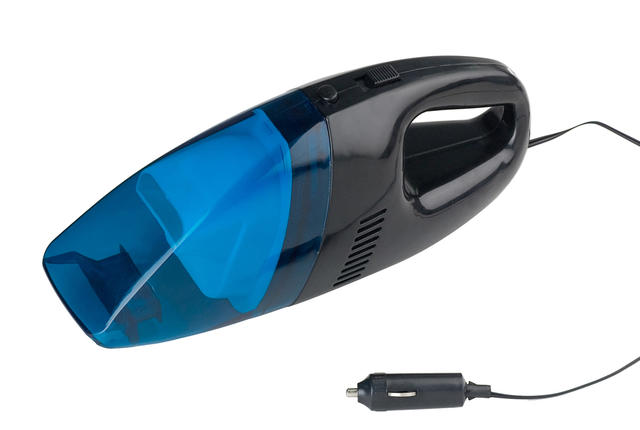NASA’s Technology Transfer Program is “the agency’s oldest continually operated program,” according to Spinoff, its annual guide of consumer products developed from NASA technology.
The agency has issued the guide since 1976 to emphasize just how much NASA research has gone into products and innovations that you see in everyday life. It’s catalogued 2000 innovations and counting. Here are 10 technologies that owe their existence to space exploration.
1. CELL PHONE CAMERA, 1995

The world’s most popular selfie tech is also NASA’s most ubiquitous spinoff technology. Cell phone cameras use a complementary metal oxide semiconductor (CMOS) image sensor—not a new technology, but one revolutionized at NASA’s Jet Propulsion Laboratory, which made the sensor smaller, lighter, and able to produce a cleaner image. Coincidentally, the very notion of digital cameras was born at the Jet Propulsion Laboratory in the 1960s.
2. DUSTBUSTER, 1981
Its origins trace back to the Apollo program, when NASA contracted Black & Decker to design a special drill for taking core samples of the lunar surface. The computer program used to develop the low-powered, battery-operated moon motor was then used in the consumer space. A plethora of home cordless tools, and a tiny vacuum cleaner, were born.
3. MEMORY FOAM, 1966

The key ingredient in your comfy pillow was developed to absorb shock and improve the comfort of airplane seats. Today, the ubiquitous “slow spring back foam” improves just about everything, from football helmets and mattresses to race cars and saddles. Ironically, airplane seats remain uncomfortable.
4. EAR THERMOMETER, 1991
The thermometer sensors were first developed for satellites to check the temperatures of stars and other celestial objects by reading infrared radiation. The underlying technology was modified to measure the energy emitted from the human eardrum, making it much easier on everybody to see if the baby has a fever.
5. BABY FORMULA NUTRIENTS, 1985

When NASA needed to find a way for astronauts to eat on long-duration, deep space missions, it cultivated nutrient-enriched algae containing docosahexaenoic acid (DHA) and arachidonic acid (ARA), which are polyunsaturated fatty acids. The idea was for astronauts to grow their own food. Because these nutrients are also found in breast milk and delivered in utero to developing babies—DHA and ARA are key to visual and cognitive development—another, more terrestrial use was soon found. And while astronauts have yet to need it, babies have been eating it up.
6. ROADWAY SAFETY GROOVES, 1985
The goal was to help reduce hydroplaning on NASA runways. By carving slim grooves in the pavement, water would run off, allowing the Space Shuttle and other winged craft to land in the rain. The grooves came to the first commercial runway in 1967 (Dulles, in Washington D.C.) and eventually made their way to highway curves, saving countless terrestrial lives over the years. A test study of 14 before-and-after grooving sites in California found an 85 percent decrease in highway accidents during rainy weather [PDF].
7. INVISIBLE BRACES, 1989
These tooth straighteners owe their superpower to translucent polycrystalline alumina, which is a super-strong, super-invisible ceramic. It was first developed for heat seeking missile technology. NASA helped apply it to smile technology.
8. SCRATCH-RESISTANT LENSES, 1983

They’re hard to scuff up thanks to NASA research into water purification. A thin, plastic film was developed and applied to a certain filter in the purification process, and would turn up again in NASA research into ways to protect space suit visors. In 1983, Foster Grant licensed the technology, and glasses have never been the same since.
9. WINGLETS, 1976
These are the vertical folds at the ends of aircraft wings. They save fuel for the same reason that you folded the wingtips of paper airplanes as a kid: They help the aircraft fly farther and faster. Winglets derive from NASA research into reducing fuel costs during the 1973 oil crisis—and have reduced those costs by billions in the decades since.
10. CARDIAC PUMPS, 1996

This technology helps keep heart patients alive while they wait for donor hearts. The idea grew out of a conversation between a NASA engineer and two heart surgeons. NASA used its experience simulating fluid flow through rocket engines to develop the technology for flowing blood through the human body.
Source: Mental_Floss

































Leave a Comment
You must be logged in to post a comment.